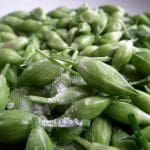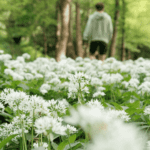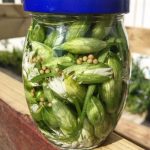This Wild Garlic Buds Pickle is a great way to utilise the wild garlic buds just before they open in to flower, we use these like a garlic version of capers and they work well as a garnish to salads, but my absolute favourite is to chuck them on top of pizza.
Ingredients:
- Wild Garlic flower buds
- Vinegar
- Water
- Bay leaves
- Mustard seeds
- Salt
- Sugar
Click here to read our ID guide for Wild Garlic
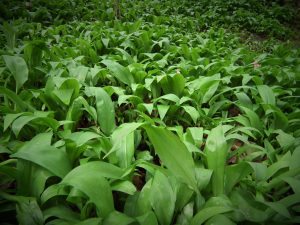
Method:
- Pickling solution:1 cup vinegar, 2 cups water, 2-3 bay leaves, 2 tea spoons of mustard seeds, 1 tea spoon of salt, 3 spoons of sugar (the sweetness is totally up to your taste)✨
- Wash wild garlic buds
- Put them tightly into the sterilised jars
- Pour with the pickling solution
- I pasteurise my pickles, by placing the jars in a big pan. I add some water and simmer them for 12-15 mins. You can probably skip this step by pouring hot solution over the buds.
- Tips or extra notes: They need to be stored for at least 2 weeks before opening
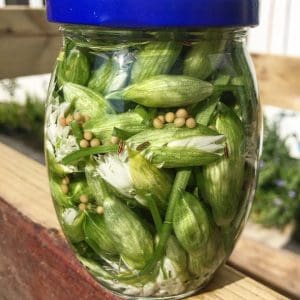
Words from Forager Joanna
To view all of our Wild Garlic recipes click here.




